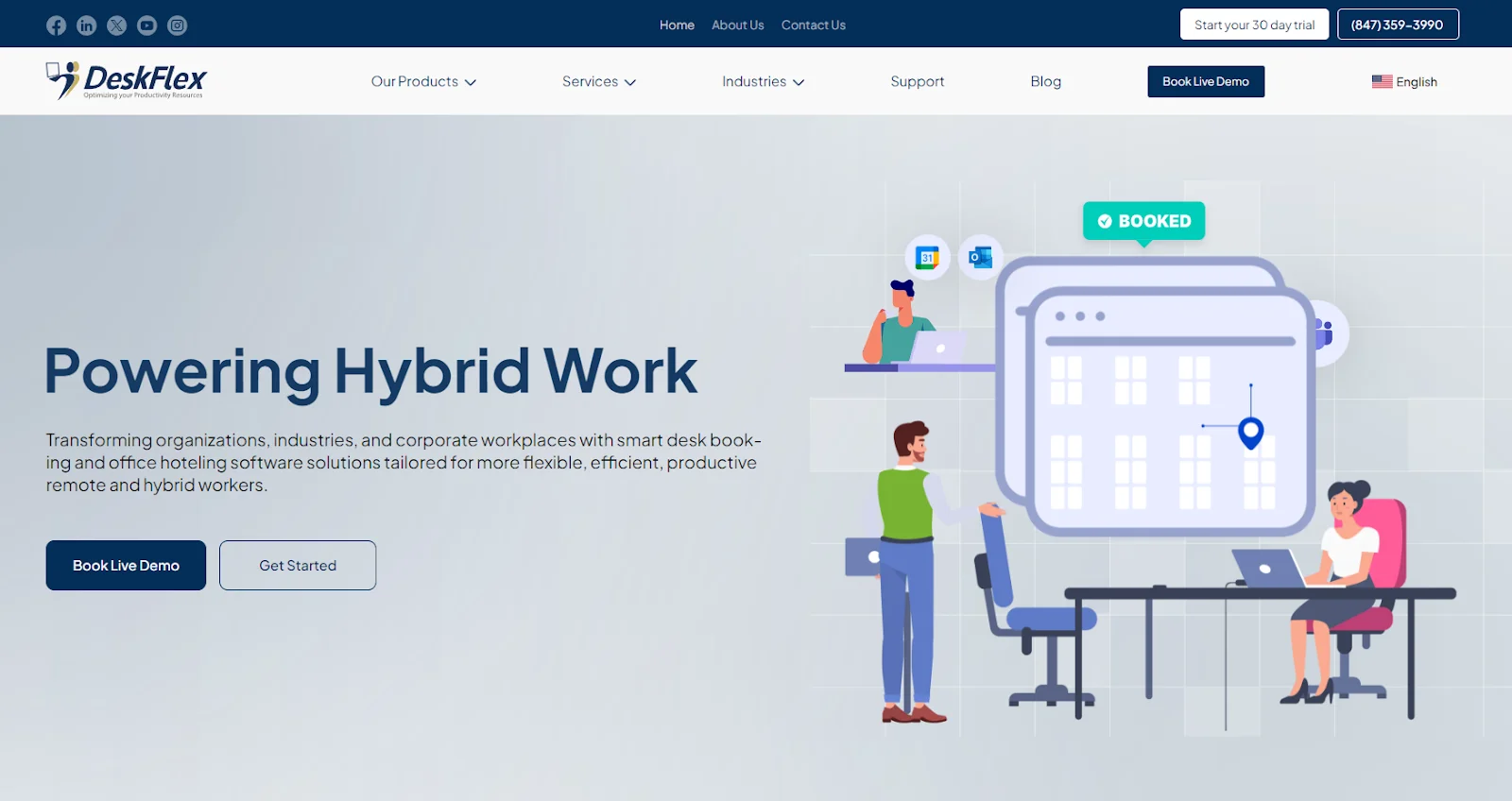
How to Boost Employee Efficiency and Performance
Employee efficiency refers to how well employees use their time and resources to reach a goal. Improving it helps a company stay competitive by keeping work focused and productive.
Efficient employees finish tasks quickly without lowering quality and stay engaged in their work. They save time and produce better work. By tracking their performance with tools like time-tracking software, businesses can find areas where employees might improve.
In this article, we’ll discuss how employee efficiency impacts the workplace, why it matters, and tips for improving it.
What Is Employee Efficiency?
Employee efficiency refers to completing tasks and projects with minimal time and resources while keeping quality high. It goes beyond task completion, focusing on the smart use of time and tools to deliver solid results and increase employee productivity.
Efficient employees handle their time well, focus on important tasks, and maintain productivity when situations change. They produce quality work without wasting resources or effort.
Efficient work benefits both the company and its employees. Businesses reduce costs by using fewer resources, while employees experience less stress by managing their tasks effectively. In an efficient workplace, productivity rises, and employees feel more satisfied and engaged.
Employee Efficiency vs. Employee Productivity
Employee efficiency focuses on reducing waste and finding the best way to achieve goals. An efficient employee finishes tasks accurately, using as few resources as possible. The concept centers on whether time, tools, and effort are put to the best use.
Employee efficiency plays to answer the question: Are we using our resources, such as time, tools, and energy, in the best way possible to get the job done?
Employee productivity, on the other hand, tracks the total output of an employee or team within a set time. It focuses on the quantity of work done, often without considering how resources are managed.
An employee might complete a high number of tasks in a day, but if they need extra time or resources to do so, they lack efficiency. While productivity focuses on getting more done, it doesn’t always consider whether those tasks were completed efficiently.
Employees may be highly productive, completing numerous tasks, but they’re inefficient if they waste resources or spend excessive time on simple tasks.
Why Is Improving Employee Efficiency Necessary?
Improving employee efficiency benefits businesses and employees. When employees complete tasks efficiently, companies save resources and increase productivity. Employees also feel more satisfied and engaged in their work.
Benefits for Businesses
Efficient employees lower costs by completing tasks with fewer resources. They focus on high-priority tasks, meet deadlines, and produce quality work. This approach allows companies to:
- Use resources wisely
- Reduce expenses
- Reach higher profit margins
Impact on Customer Satisfaction
Efficient employees improve customer experience by delivering quality work on time. This builds customer trust and reduces the likelihood of negative feedback.
As employees manage tasks efficiently and avoid delays, they help strengthen the company’s positive reputation, which in turn boosts customer satisfaction.
Building a Positive Work Culture
When companies focus on employee efficiency, everyone benefits from:
- Lower costs
- Increased satisfaction
- Stronger work culture
Efficient work practices build a supportive workplace that values productivity and quality without overloading employees.
Advantages for Employees
Workplace efficiency creates a more balanced and rewarding work experience for employees. By managing time well, employees reduce stress and avoid burnout.
Using their skills effectively increases their motivation and dedication to their roles. An efficient workplace supports a positive environment where employees feel valued and capable.
Key Metrics to Measure Employee Efficiency
Tracking employee efficiency gives businesses insight into how well tasks are completed and highlights areas for improvement. Using specific metrics allows companies to measure and understand productivity to make better decisions and boost efficiency.
1. Time-Tracking Software
Time-tracking software offers managers a clear view of how employees spend their hours on different tasks. This information helps identify where time may be lost and highlights improvement areas.
Tools like Toggl and Clockify break down productive hours, making analyzing time spent on each activity easier.
2. Quality of Work
Measuring employee efficiency shows how well tasks are completed, not just how fast. High-quality work matters as much as time management since low quality affects customer satisfaction and increases the need for rework.
3. Task Completion Rates
Monitoring task completion rates shows how often employees meet deadlines and handle tasks accurately. Employees who regularly complete tasks on time while maintaining quality indicate efficient work habits.
4. Productivity Scores
Productivity scores, such as output per hour or total tasks completed, provide a broad view of how much employees accomplish in a set time.
Managers can use these scores to compare performance across individuals or teams, identifying areas for improvement that might raise overall output without adding extra work.
5. Customer Satisfaction
Customer feedback reveals important details about employee engagement. Negative reviews may indicate issues in:
- How tasks are handled
- Response times
- Completion speed
By reviewing customer satisfaction scores, companies can pinpoint specific areas to improve and track how those changes impact efficiency.
6. Application Usage Tracking
Tracking the use of workplace applications shows how employees use tools and resources on a daily basis. By seeing how much time each person spends on different applications, managers can identify whether certain tools help or slow down work.
7. Performance Reviews
Regular performance reviews allow managers to assess efficiency and track progress over time. These sessions give managers a chance to:
- Set clear goals
- Review completed work
- Provide feedback on where improvements can be made
Performance reviews also create an opportunity to discuss any additional tools or support employees may need to improve efficiency.
7 Strategies to Improve Employee Efficiency
Improving employee efficiency requires focused strategies that help employees work smarter, not harder. Companies can create a more productive work environment by implementing these methods.
1. Focused Training Programs
Providing focused training equips employees with the skills and knowledge needed to complete tasks effectively. Training sessions should address the specific skills relevant to each role, helping employees approach tasks with confidence and accuracy.
Consistent training keeps employees updated on new tools and techniques that support more efficient work.
2. Clear Task Prioritization
Teaching employees to prioritize tasks helps them concentrate on what needs immediate attention. A clear sense of priority allows employees to:
- Complete high-value tasks first
- Prevent last-minute rushes
- Reduce stress
Setting clear priorities across teams helps everyone understand which tasks hold the most value and promotes a well-organized workday.
3. Access to Effective Tools
Providing employees with the right tools boosts their ability to work efficiently. Project management software, collaboration platforms, and time-tracking tools allow employees to organize tasks and communicate easily.
Access to effective tools reduces time spent on routine tasks, allowing employees to focus on tasks requiring attention and skills. Choosing the right tools makes a measurable difference in daily productivity.
4. Supporting Work-Life Balance
Promoting a balanced work environment helps employees stay productive over time. Encouraging regular breaks and setting realistic workload expectations prevents burnout and keeps productivity consistent.
A healthy work-life balance also supports higher job satisfaction, leading employees to approach their tasks with greater focus and energy.
5. Aligning Skills With Job Roles
Placing employees in roles that fit their skills increases efficiency and job satisfaction. When employees’ strengths match their responsibilities, they complete tasks more accurately and quickly.
Regular performance evaluations give managers insight into each employee’s strengths, allowing adjustments to maximize efficiency. An employee working in a role that uses their skills fully brings more value to the team and the company.
6. Offering Performance-Based Incentives
Rewarding employees based on performance encourages a strong work ethic and efficient practices. Bonuses, recognition, and other rewards show employees that their hard work makes a difference.
Employees recognized for outstanding performance are motivated to maintain high performance standards. A transparent system of rewards by human resources or managers builds a workplace culture focused on results and efficiency.
7. Providing Flexible Work Arrangements
Offering flexible work options, such as remote work or flexible hours, allows employees to choose environments that suit their working style. When employees have the freedom to adapt their schedules, they often find it easier to focus and complete tasks efficiently.
Flexible arrangements support a productive and balanced approach to work. It allows employees to work at their best times for higher output.
The Impact of Dynamic and Static Efficiency in the Workplace
In the workplace, both static and dynamic efficiency play key roles in maintaining productivity and adapting to changing demands.
- Static efficiency: Static efficiency relates to the consistent use of resources in the workplace. It focuses on making the most of the available resources without waste, keeping tasks completed in the most cost-effective way.
- Dynamic efficiency: Dynamic efficiency refers to the type of efficiency that keeps resources allocated flexibly. It helps the workplace adjust to new challenges and opportunities, such as technological advancements or shifts in market demand.
HR and managers must balance static and dynamic efficiency to improve long-term performance. While static efficiency focuses on maintaining steady productivity, dynamic efficiency encourages innovation and flexibility, allowing the business to grow and evolve.
How to Create a Culture of Efficiency in the Workplace
Building a culture of efficiency requires clear actions from both leaders and employees. By promoting communication, setting clear goals, and providing regular feedback, companies can create an environment where efficiency becomes part of daily work.
- Leadership role: Leaders play an essential role in establishing efficient work habits. When managers model efficient practices, employees feel encouraged to follow these behaviors. Managers who set realistic goals, prioritize tasks, and manage resources thoughtfully inspire their teams to do the same.
- Open communication: Open communication between employees and management helps identify and resolve inefficiencies quickly. Regular meetings and feedback sessions allow employees to share ideas on improving workflows and discuss concerns.
- Regular feedback: Regular feedback keeps employees aligned with company goals and helps them improve work habits. Constructive feedback highlights strengths and areas for improvement, motivating employees to work more efficiently.
How DeskFlex Helps Hybrid Employees Work Efficiently
DeskFlex is a comprehensive office management tool designed to improve workspace efficiency and help employees maximize their productivity. Here’s how DeskFlex supports efficient work environments:
Real-Time Desk and Room Booking
DeskFlex allows employees to easily reserve desks, meeting rooms, and other office resources in real time. This feature eliminates scheduling conflicts and provides employees with the necessary resources without delays.
With a clear overview of available spaces, employees can better plan their workday, minimizing wasted time and maximizing productive time.
Hot-Desking and Flexible Workstations
DeskFlex’s hot-desking feature is a game-changer for companies implementing hybrid work models. Employees can book desks as needed, allowing for more efficient use of office space.
This flexibility allows workers to choose where they feel most productive on any given day, whether collaborating with colleagues or focusing on individual tasks.
Integration With Calendar Tools
DeskFlex integrates smoothly with popular calendar tools like Zapier and Microsoft Outlook.
This integration simplifies the process of booking spaces and syncing appointments, reducing the time employees spend coordinating meetings and desk reservations.
It also helps employees stay organized by automatically syncing reservations with their work calendars.
3D Floor Maps for Easy Navigation
DeskFlex’s 3D interactive floor maps visually represent the office layout, allowing employees to see which spaces are available at a glance.
This reduces the time spent searching for available desks or meeting rooms, allowing employees to focus on their work more efficiently.
Advanced Reporting and Analytics
DeskFlex provides data-driven insights into office space use. Managers can analyze desk usage, meeting room occupancy, and employee booking patterns to identify inefficiencies and optimize space allocation.
By making informed decisions based on this data, companies can improve efficiency and create a more productive work environment for employees.
DeskFlex speeds up office management and helps employees work more efficiently by reducing distractions, saving time, and optimizing workspace utilization.
Ready to optimize your workspace and improve employee performance with DeskFlex? Book a demo today to learn more.
FAQs About Employee Efficiency
What is the meaning of employee efficiency?
Employee efficiency refers to how effectively employees use their time and resources to complete tasks. It minimizes waste and verifies tasks are completed with the least effort, time, and resources while maintaining high-quality standards.
How do you measure employee efficiency?
Employee efficiency is measured through several key metrics, including time-tracking software, task completion rates, quality of work, and productivity scores.
Tools like time-tracking software help analyze how employees spend their working hours, while performance reviews and customer feedback provide insights into the quality and timeliness of completed tasks.
What is efficiency in the workplace?
Efficiency in the workplace is the ability of employees to complete tasks in a streamlined manner, using the least amount of time, resources, and energy to achieve the desired outcome. Efficient employees focus on optimizing their workflows, minimizing distractions, and using available resources wisely.
What affects employee efficiency?
Several factors influence employee efficiency, including access to the right tools, time management skills, task prioritization, training programs, and work-life balance. Assuring employees have the resources and support needed to perform their jobs well can significantly improve their efficiency.















































 Support
Support  Demo
Demo  Blog
Blog 


